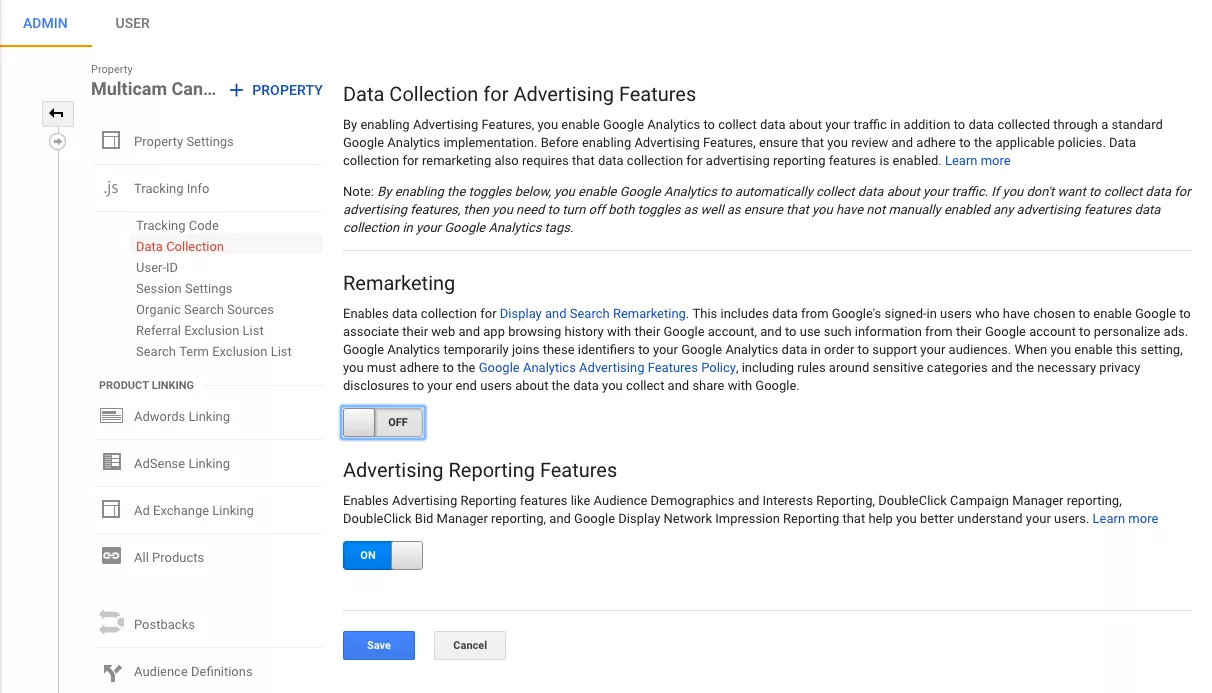Step-by-Step Tutorial: Remarketing In Google Analytics
Step-by-Step Tutorial: Remarketing In Google Analytics
Blog Article
Utilizing Remarketing in Google Analytics: A Comprehensive Guide
Using remarketing in Google Analytics supplies services a tactical edge in reaching out to prospective consumers. This overview will shed light on the essential actions included in harnessing the complete potential of remarketing in Google Analytics, leading to boosted advertising outcomes.
Understanding Remarketing in Google Analytics
Remarketing in Google Analytics enables organizations to strategically target customers who have actually formerly engaged with their website or mobile application. By leveraging data from Google Analytics, companies can develop personalized remarketing listings based upon individual habits, such as pages visited, activities taken, or particular goals achieved. This powerful device makes it possible for companies to re-engage with individuals who have actually revealed rate of interest in their services or items, inevitably enhancing the chance of conversion.
Comprehending the various sorts of remarketing strategies is critical for a successful project - What Is “Remarketing” In Google Analytics?. Google Analytics provides numerous choices, consisting of basic remarketing, dynamic remarketing, and remarketing checklists for search ads (RLSA) Each type serves an unique function and can be customized to meet details marketing objectives
Furthermore, analyzing the performance of remarketing projects is crucial for maximizing results. Google Analytics supplies beneficial understandings into the effectiveness of various remarketing strategies, allowing organizations to make data-driven decisions and fine-tune their targeting strategy. By continuously changing and keeping an eye on remarketing initiatives based upon analytics data, businesses can make best use of ROI and drive success in their marketing initiatives.
Setting Up Remarketing Projects

After establishing up target market listings, the next action is to connect Google Analytics with Google Advertisements. By linking these two systems, services can flawlessly move audience checklists from Google Analytics to Google Advertisements for remarketing functions. This integration permits even more accurate targeting and better project performance.
When the accounts are linked, businesses can develop remarketing campaigns in Google Advertisements making use of the audience notes formerly defined in Google Analytics. These campaigns can be tailored with particular advertisement creatives, messaging, and bidding strategies to successfully re-engage with past site visitors and drive conversions. By adhering to these actions, services can utilize the power of remarketing to boost their advertising and marketing initiatives and enhance ROI.
Utilizing Target Market Division Strategies

Predefined segments in Google Analytics enable you to swiftly assess common audience classifications fresh individuals, returning individuals, or users who finished a certain objective on your web site. Personalized segments, on the other hand, enable you to develop one-of-a-kind sectors based upon specific requirements that are very important to your service goals. Dynamic remarketing checklists instantly change based upon user actions, revealing personalized advertisements to users who have actually communicated with your site particularly methods.
Analyzing Remarketing Performance Metrics
Upon examining the effectiveness of remarketing campaigns in Google Analytics, the evaluation of crucial efficiency metrics gives useful understandings into audience engagement and conversion rates. By delving right into metrics such as click-through prices Read More Here (CTR), conversion rates, price per procurement (CERTIFIED PUBLIC ACCOUNTANT), and return on advertisement invest (ROAS), marketing experts can evaluate the success of their remarketing initiatives. Examining these metrics makes it possible for marketing professionals to enhance projects, refine audience targeting, and allot budget plans successfully to enhance general remarketing efficiency.
Optimizing Remarketing Strategies
When refining remarketing approaches in Google Analytics, concentrating on audience division is vital for achieving project success. By dividing your audience into details sectors based on their habits, demographics, or rate of interests, you can customize your advertisements much more efficiently to each group. This targeted approach enhances the possibility of engaging users that have actually already revealed rate of interest in your items or solutions, causing higher conversion rates.
An additional important aspect of optimizing remarketing methods from this source is constantly screening and refining your campaigns (What Is “Remarketing” In Google Analytics?). A/B testing various ad creatives, messaging, or deals can aid you identify what reverberates best with your audience and drives the most conversions. By examining the efficiency of these examinations in Google Analytics, you can make data-driven choices to enhance your remarketing efforts even more
Furthermore, leveraging dynamic remarketing can considerably enhance your campaign results. This feature allows you to reveal customized advertisements to individuals based on their past interactions with your site, showcasing solutions or items they have formerly watched. By supplying tailored material to users based upon their behaviors and interests, dynamic remarketing can help enhance involvement and drive conversions.
Verdict
To conclude, taking advantage of remarketing in Google Analytics is a tactical method to target individuals who have actually formerly involved with a web site. By producing tailored target market checklists and using target market division methods, businesses can optimize remarketing advocate enhanced conversion rates. Analyzing efficiency metrics and continually maximizing techniques are critical for making the most of the performance of remarketing initiatives.
Google Analytics supplies numerous alternatives, consisting of standard remarketing, vibrant remarketing, and remarketing listings for search ads (RLSA)After setting up audience listings, the following action is to link Google Analytics with Google Advertisements. By connecting these 2 platforms, organizations can effortlessly transfer audience checklists from Google Analytics to Google Advertisements for remarketing functions.As soon as the accounts are connected, organizations can develop remarketing campaigns in Google Advertisements using the audience lists formerly defined in Google Analytics.When refining remarketing techniques in Google Analytics, concentrating on audience division is this website extremely important for achieving project success.
Report this page